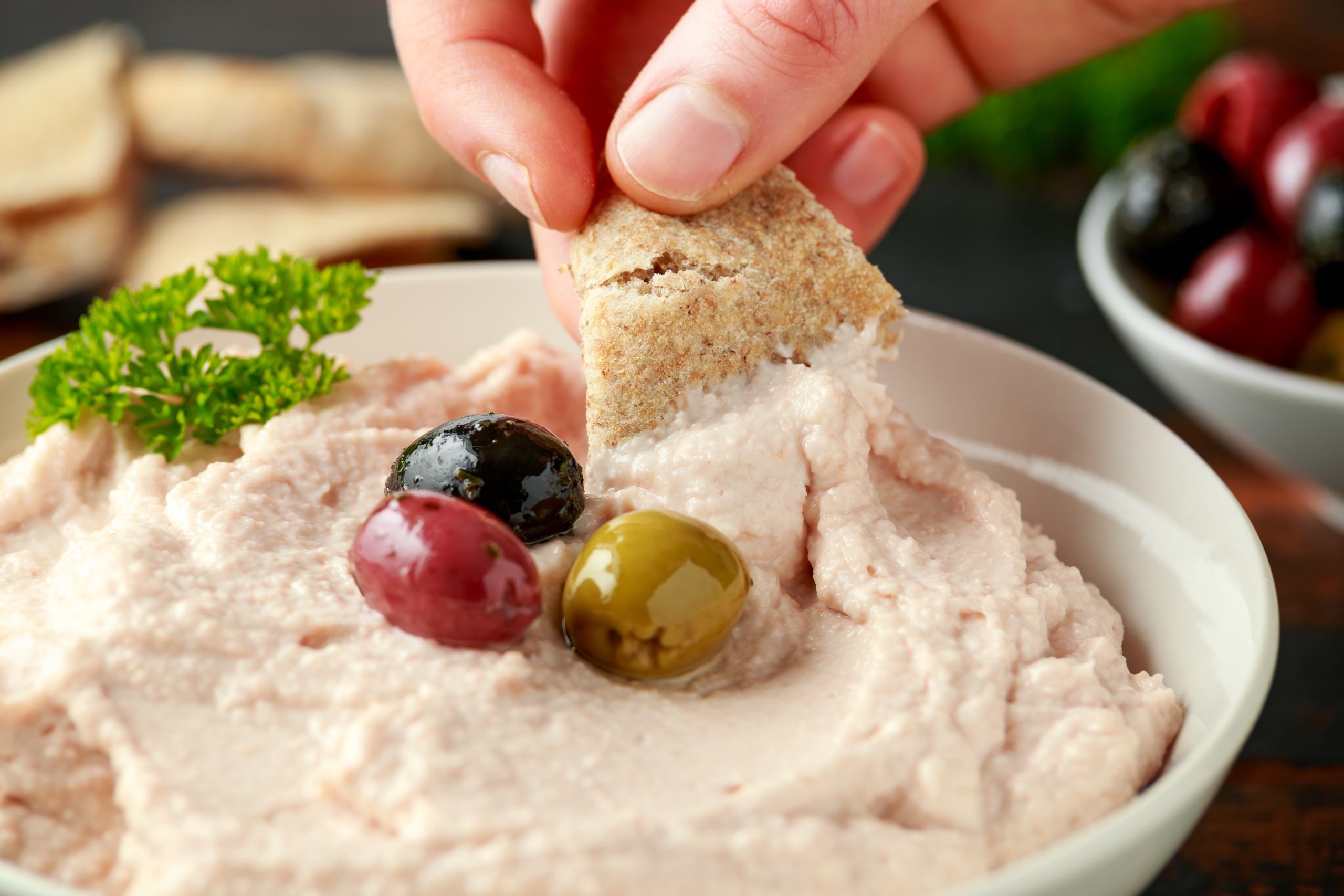Among the many dishes of Greek cuisine, few carry the essence of the sea and the weight of history like taramosalata. This creamy fish roe dip is an appetizer that epitomizes the deep connection between humans, nature, and tradition. From ancient maritime rituals to Orthodox fasting customs, taramosalata has remained a thread linking cultures across centuries, a dish of both sustenance and symbolism.
Origins: From the Aegean to the Balkans
The word taramosalata comes from tarama (ταραμάς), meaning salted and cured fish roe, and salata (σαλάτα), meaning salad. Its roots stretch across Greece, Turkey, and the Balkans, where fish and seafood have long played a crucial role in both daily sustenance and ritual practices.
In ancient Greece, fish and fish roe were not only dietary staples but also offerings to sea deities, particularly Poseidon. Before embarking on voyages, sailors would cast seafood into the waves as a gesture of devotion, seeking safe passage. The sea, unpredictable and often perilous, was both a source of life and a force to be appeased.
With the spread of Christianity, fish retained its sacred associations. The fish symbol (Ichthys, ἰχθύς) became a covert sign of faith among early Christians during Roman persecution. Beyond its symbolic role, fish—particularly roe—became a key food during periods of religious fasting, aligning with dietary restrictions while providing essential nourishment.
Kathará Deftéra: The Day of Cleansing
If there is one day when taramosalata takes center stage, it is Kathará Deftéra (Καθαρά Δευτέρα), or “Clean Monday.” This marks the beginning of Orthodox Lent, akin to Ash Wednesday in Western Christianity, and is dedicated to physical and spiritual purification.
On this day, Orthodox tradition calls for abstaining from meat, dairy, and eggs from land animals. However, seafood, mollusks, and fish roe are permitted, making taramosalata an ideal dish—flavorful, nutritious, and in harmony with fasting rules.
Clean Monday is not just about abstinence; it is also a day of outdoor celebration. Greek families gather for picnics by the sea or in the countryside, bringing along lagana (unleavened bread), olives, raw vegetables, seafood, and, of course, taramosalata. It is a day of both restraint and communal joy, where food reflects both tradition and togetherness.
A Monastic Approach to Food
On Mount Athos, where monastic life follows a strict yet deeply symbolic dietary code, taramosalata finds its place within a tradition of mindful eating. The monks adhere to simple culinary principles:
- No meat – Food should sustain the body without burdening the spirit.
- Fish and roe only on permitted days – Taramosalata is prepared when marine products are allowed.
- Silence during meals – Eating is an act of awareness, not distraction.
The Athonite diet relies on humble ingredients: bread, legumes, vegetables, fruit, olive oil, and minimal seasoning. Within this framework, taramosalata, with its smooth texture and intense flavor, exemplifies how a modest dish can hold deep meaning—nourishing both body and soul.
Traditional Preparation
Though now known worldwide, taramosalata is still made using time-honored techniques.
Classic Ingredients:
Tarama (fish roe, typically from carp or cod)
Soaked stale bread or boiled potatoes (to create a smooth base)
Lemon juice (for acidity)
Extra virgin olive oil (for emulsification)
Grated onion or garlic (optional, for added depth)
The key to perfect taramosalata lies in emulsification: the oil and roe must blend into a velvety, airy cream. Unlike many commercial versions, which are dyed bright pink, authentic taramosalata has a natural hue, ranging from pale beige to soft pink.
A Dish Best Shared
No Greek meze spread is complete without taramosalata, typically served with warm pita, toasted bread, or fresh vegetables. It is often enjoyed alongside a glass of ouzo, whose aniseed notes enhance the dip’s briny character.
Similar dishes appear across cultures: In Romania, salată de icre is made with carp roe and onion. In Turkey, tarama is a staple in cold appetizer platters.
To eat taramosalata is to taste the sea, history, and tradition. It connects us to an ancient past where food was more than sustenance—it was a link between the human and the natural world. In an era of fast consumption, this dish remains a lesson in simplicity, balance, and the enduring power of shared meals.





